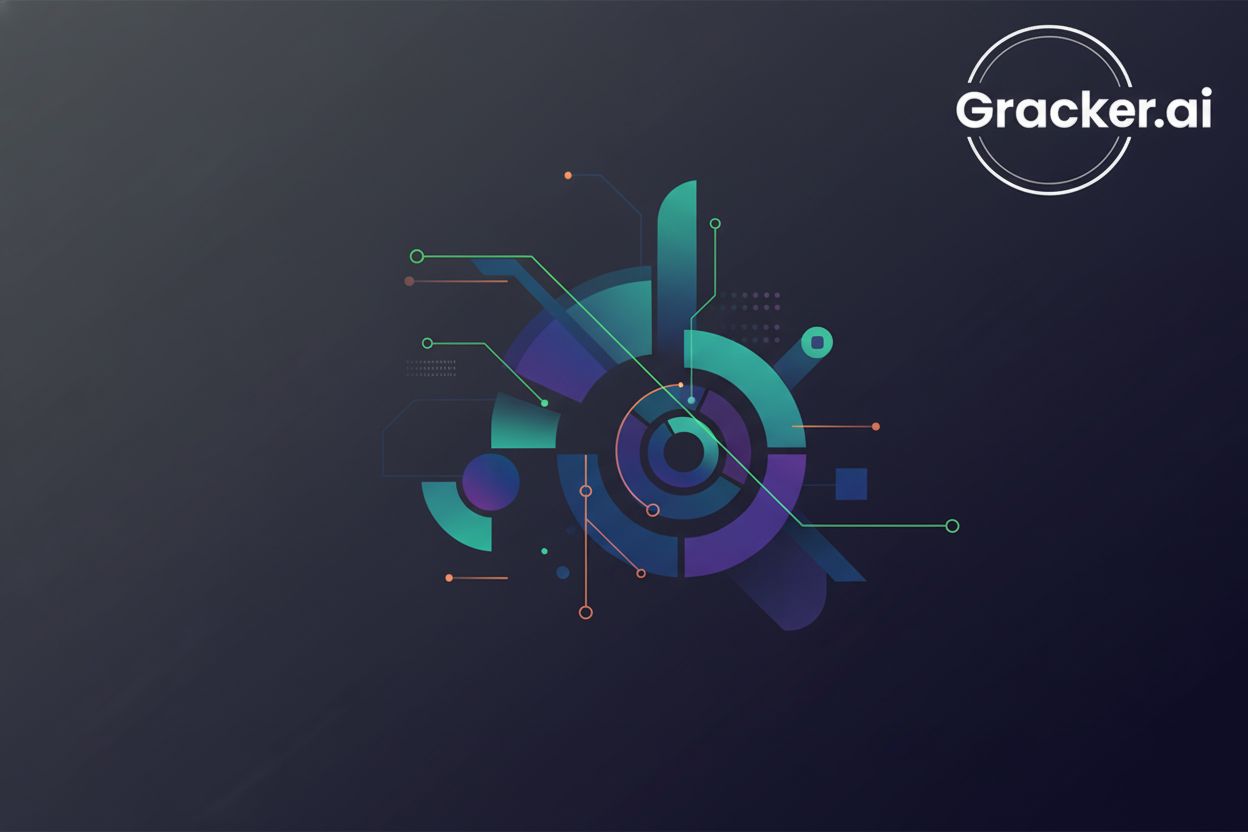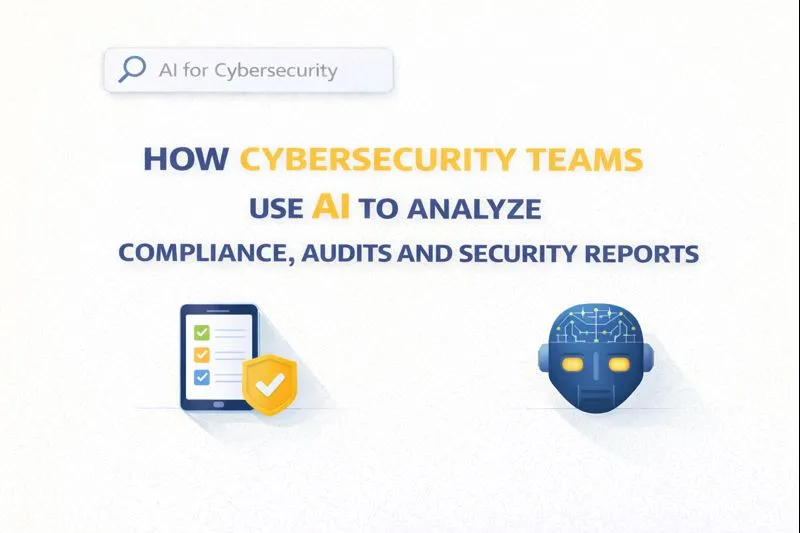Navigating the Cybersecurity SaaS Marketing Landscape: Essential Questions for Value-Driven Strategies

As cyber threats grow in sophistication and frequency, organizations are increasingly turning to SaaS solutions to fortify their defenses. However, in this high-stakes arena, simply having a product isn't enough – its value must be clear, compelling, and demonstrable. Marketing a cybersecurity SaaS product demands a strategic approach that goes beyond traditional marketing tactics. It requires a delicate balance between technical precision and persuasive communication, all while navigating a landscape fraught with complex regulations, rapid technological changes, and heightened customer skepticism. Why is demonstrating product value so crucial in this space? Consider these factors:
High-Consequence Decisions: For many organizations, choosing a cybersecurity solution can be a make-or-break decision. A data breach or cyber attack can result in devastating financial losses, reputational damage, and legal repercussions. Your marketing must clearly show how your product mitigates these risks.
Crowded Marketplace: The cybersecurity market is saturated with solutions, making it challenging for potential customers to differentiate between options. Your value proposition needs to cut through the noise and clearly articulate why your solution is the best choice.
Technical and Non-Technical Stakeholders: Your marketing needs to resonate with both technical experts who understand the intricacies of cybersecurity and non-technical decision-makers who focus on business impact. Demonstrating value effectively to both audiences is critical.
Evolving Threat Landscape: As cyber threats continually evolve, your product's value must be framed in the context of addressing both current and emerging risks. This requires a marketing strategy that's agile and forward-thinking.
ROI Justification: In an era of tight budgets and scrutinized spending, clearly demonstrating the return on investment of your cybersecurity solution is non-negotiable. Your marketing must help prospects build a compelling business case for your product.
This comprehensive guide delves into the key questions cybersecurity marketers must address to develop a robust, value-driven marketing strategy. By thoroughly examining these questions, you'll be better equipped to craft a marketing approach that not only highlights your product's features but also clearly demonstrates its indispensable value in protecting your customers' digital assets, reputation, and bottom line. From differentiating in a crowded market to effectively communicating ROI, from building trust in a high-stakes industry to navigating complex regulatory landscapes – we'll explore the critical elements that can elevate your cybersecurity SaaS marketing from good to exceptional. Let's dive in and uncover how to create a marketing strategy that truly resonates in the world of cybersecurity.
1. How Do We Differentiate in a Crowded Market?
In the saturated cybersecurity landscape, standing out is paramount. Consider these aspects:
Unique Value Proposition (UVP)
Conduct a thorough competitive analysis to identify gaps in the market
Clearly articulate what sets your solution apart (e.g., AI-driven threat detection, seamless integration capabilities, or unparalleled scalability)
Ensure your UVP addresses a pressing pain point in the industry
Targeted Messaging
Develop messaging that resonates with your specific audience segments
Use language that bridges technical and business concerns
Create a compelling narrative around your product's unique features and benefits
Niche Focus
Consider specializing in a particular cybersecurity vertical (e.g., IoT security, cloud security, or compliance management)
Become the go-to solution for a specific industry (e.g., healthcare, finance, or government)
2. Who Is Our Target Audience, and How Do We Reach Them?
Understanding your audience is crucial for effective marketing. Dive deep into these areas:
Audience Segmentation
Identify key decision-makers (CISOs, IT managers, CIOs, etc.)
Consider influencers in the buying process (security analysts, compliance officers)
Understand the needs and pain points of each segment
Communication Strategies
Develop separate content streams for technical and non-technical stakeholders
Use appropriate language and depth for each audience segment
Create materials that facilitate internal communication between technical and business teams
Channel Selection
Identify the most effective channels for your audience (e.g., industry publications, conferences, webinars, social media)
Leverage platforms like LinkedIn for B2B engagement
Consider partnerships with industry analysts and thought leaders
3. How Do We Build Trust and Credibility in the Cybersecurity Space?
In an industry where trust is paramount, establishing credibility is non-negotiable:
Thought Leadership
Regularly publish insightful content on industry trends and emerging threats
Participate in or host webinars and podcasts featuring your in-house experts
Contribute to reputable industry publications and forums
Expertise Showcase
Share case studies and success stories (with client permission)
Offer free resources like whitepapers, eBooks, and tools that demonstrate your expertise
Maintain a blog with timely, relevant content on cybersecurity issues
Third-Party Validation
Pursue relevant industry certifications (e.g., ISO 27001, SOC 2)
Seek partnerships with established cybersecurity vendors
Encourage and showcase customer reviews and testimonials
4. How Do We Balance Technical Accuracy with Marketing Appeal?
Striking the right balance is crucial for effective cybersecurity marketing:
Simplifying Complex Concepts
Use analogies and real-world examples to explain technical features
Create infographics and visual aids to illustrate complex processes
Develop a glossary of terms to help non-technical readers
Multi-level Content Strategy
Create tiered content with varying levels of technical depth
Use a pyramid approach: start with high-level benefits, then drill down into technical details
Provide options for readers to "learn more" about technical aspects
Accuracy Review Process
Implement a review process involving both technical experts and marketers
Ensure all claims are backed by data and can be substantiated
Regular update content to reflect the latest product capabilities and industry standards
5. How Should We Approach Content Marketing in the Cybersecurity Field?
Content is king in cybersecurity marketing. Focus on these areas:
Diverse Content Types
Develop a mix of content including whitepapers, blog posts, webinars (follow proper webinar etiquette to maximize audience engagement), and video tutorials.
Create interactive content like threat simulations or ROI calculators
Produce regular threat intelligence reports or industry benchmark studies
Timely and Relevant Content
Establish a rapid response team for creating content on breaking threats
Maintain an editorial calendar aligned with industry events and trends
Leverage news-jacking techniques to tie your solution to current events
Funnel-Aligned Content
Create awareness content addressing broad industry challenges
Develop consideration-stage content comparing different approaches
Produce decision-stage content like detailed case studies and product comparisons
6. How Do We Measure the Success of Our Marketing Efforts?
Effective measurement is key to refining your strategy:
Key Performance Indicators (KPIs)
Track metrics like Marketing Qualified Leads (MQLs), conversion rates, and pipeline velocity
Monitor engagement metrics such as content downloads, webinar attendance, and email open rates
Measure brand awareness through share of voice and brand mention sentiment
Attribution Modeling
Implement multi-touch attribution to understand the impact of different marketing touchpoints
Use tools like Google Analytics and marketing automation platforms for tracking
Regularly review and adjust your attribution model based on evolving buyer journeys
Analytics and Reporting
Invest in robust analytics tools that integrate with your CRM and marketing platforms
Develop dashboards for real-time monitoring of key metrics
Conduct regular (monthly or quarterly) in-depth analysis of marketing performance
7. How Do We Align Our Marketing Strategy with Sales Objectives?
Marketing and sales alignment is crucial for success:
Sales Enablement
Create a comprehensive sales enablement kit including battlecards, objection handlers, and customer personas
Develop case studies and ROI models to support sales conversations
Offer regular training sessions for the sales team on new marketing initiatives and product updates
Feedback Loop
Establish regular meetings between marketing and sales teams
Create a system for sales to provide feedback on lead quality and content effectiveness
Use sales insights to inform future marketing campaigns and content creation
Consistent Messaging
Develop a central repository of approved messaging and positioning statements
Ensure all customer-facing teams are using consistent language and value propositions
Regularly update and distribute brand guidelines and messaging documents
8. How Do We Navigate the Regulatory Landscape in Our Marketing?
Compliance is a critical consideration in cybersecurity marketing:
Regulatory Compliance
Stay informed about relevant regulations (e.g., GDPR, CCPA, HIPAA)
Ensure all marketing claims comply with industry standards and regulations
Implement a legal review process for marketing materials
Compliance as a Differentiator
Highlight how your solution helps customers meet compliance requirements
Create content that educates prospects on regulatory challenges and solutions
Position compliance features as a key value proposition where relevant
Legal Considerations
Work closely with legal teams to understand boundaries in marketing claims
Develop clear guidelines for using customer data in marketing efforts
Implement proper disclaimers and privacy policies in all marketing materials
9. How Do We Effectively Communicate the ROI of Our Cybersecurity Solution?
Demonstrating value is crucial in justifying cybersecurity investments:
Quantifiable Metrics
Develop models to show potential cost savings from prevented breaches
Create calculators that demonstrate time saved through automation
Use industry benchmarks to contextualize the value of your solution
Case Studies and Success Stories
Collect detailed data on customer outcomes and improvements
Create compelling narratives that highlight both quantitative and qualitative benefits
Segment case studies by industry or use case for maximum relevance
Total Cost of Ownership (TCO) Analysis
Provide comprehensive TCO analyses that include implementation, training, and ongoing costs
Compare your TCO favorably against competitors or status quo solutions
Highlight long-term value and scalability of your SaaS model
10. How Do We Stay Agile in a Rapidly Evolving Threat Landscape?
Adaptability is key in the fast-paced cybersecurity world:
Rapid Response Capability
Establish a process for quickly creating and disseminating content on new threats
Train your team to pivot messaging in response to industry changes
Develop templates for rapid production of threat advisories or product updates
Balancing Long-term and Short-term
Maintain a core marketing strategy while allowing flexibility for emerging trends
Allocate resources for both planned campaigns and ad-hoc responses
Regularly review and adjust your marketing mix based on industry developments
Crisis Communication
Develop a crisis communication plan for potential security incidents or vulnerabilities
Establish clear roles and responsibilities for crisis response
Prepare template statements and FAQs for various scenarios
11. How Do We Leverage Partnerships and Ecosystems in Our Marketing?
Partnerships can significantly amplify your marketing efforts:
Strategic Partnerships
Identify potential technology partners whose solutions complement yours
Explore channel partnerships to expand your market reach
Consider academic or research partnerships to enhance credibility
Co-marketing Initiatives
Develop joint webinars, whitepapers, or events with partners
Create integrated marketing campaigns that showcase the combined value proposition
Leverage partner channels and audiences to expand your reach
Ecosystem Positioning
Clearly articulate your role and value within larger cybersecurity ecosystems
Develop marketing materials that show how your solution integrates with and enhances other tools
Participate in ecosystem-wide initiatives or certifications
12. How Do We Approach Global Marketing in the Cybersecurity Space?
For companies with global ambitions, consider these factors:
Regional Customization
Research cybersecurity needs and regulations in different regions
Adapt messaging and value propositions for local markets
Consider cultural nuances in your marketing materials and approaches
Localization Strategy
Translate key marketing materials into local languages
Develop region-specific case studies and testimonials
Adapt your content strategy to align with local industry events and trends
Global Brand Consistency
Maintain core brand elements and messaging across all markets
Develop global marketing guidelines that allow for local flexibility
Establish a process for approving and managing localized content
Conclusion
By thoroughly addressing these questions, cybersecurity marketers can develop a comprehensive, value-driven marketing strategy that resonates with their target audience and effectively communicates the unique benefits of their SaaS product. Remember, the cybersecurity landscape is constantly evolving, so regularly revisiting and refining your strategy is crucial for long-term success. As you implement your marketing plan, continuously gather feedback from customers, sales teams, and industry trends. Use these insights to iterate on your approach, ensuring that your marketing efforts remain aligned with your product's value proposition and the ever-changing needs of the cybersecurity market.




